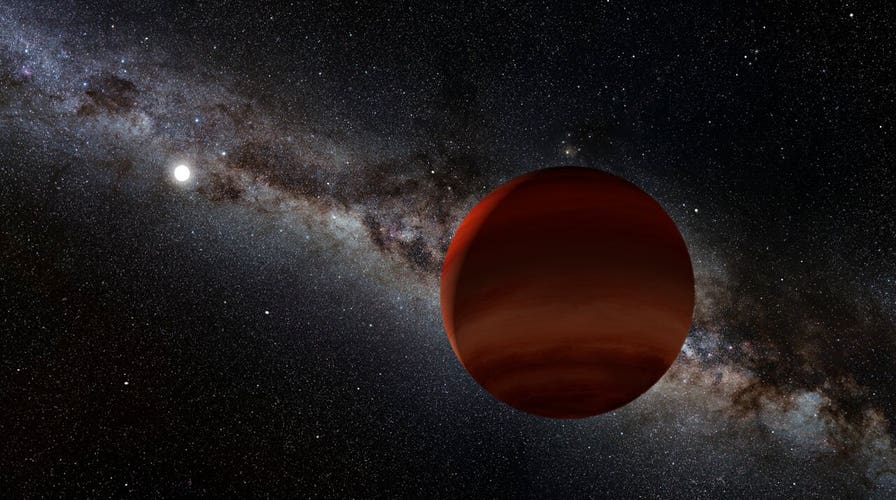Fox News Flash top headlines for August 24
Fox News Flash top headlines are here. Check out what's clicking on Foxnews.com.
A group of citizen scientists has discovered 95 "cool worlds" near the sun, celestial objects much larger than planets but lighter than stars, known as brown dwarfs, according to a new study.
The research, slated to be published in the Astrophysical Journal and available to read on the arXiv.org preprint server, notes these "previously unrecognized substellar neighbors to the sun" were found by a citizen scientist project known as Backyard Worlds: Planet 9.
“These cool worlds offer the opportunity for new insights into the formation and atmospheres of planets beyond the Solar System,” said the study's lead author, Aaron Meisner from the National Science Foundation’s NOIRLab, in a statement. “This collection of cool brown dwarfs also allows us to accurately estimate the number of free-floating worlds roaming interstellar space near the Sun.”

Artist’s impression of one of this study’s superlative discoveries, the oldest known wide-separation white dwarf plus cold brown dwarf pair. The small white orb represents the white dwarf (the remnant of a long-dead Sun-like star), while the brown/orange foreground object is the newly discovered brown dwarf companion. This faint brown dwarf was previously overlooked until it was spotted by citizen scientists, because it lies right within the plane of the Milky Way. (NOIRLab/NSF/AURA/P. MarenfeldAcknowledgement: William Pendrill)
MILKY WAY GALAXY COULD HAVE 'OCEAN WORLDS' ALL OVER, NASA SAYS
The findings were made possible using archived data from the Nicholas U. Mayall 4-meter Telescope at Kitt Peak National Observatory (KPNO) and the Víctor M. Blanco 4-meter Telescope at Cerro Tololo Inter-American Observatory (CTIO).
Several of the "newly discovered worlds" are among the coolest ever discovered. A few of them have temperatures that could approach those seen on Earth and are "cool enough to harbor water clouds," the statement added.
So far, the Backyard Worlds researchers (approximately 100,000 around the world) have discovered approximately 1,500 cold worlds near the sun. The new findings are among the coldest ever discovered, with the temperatures of these brown dwarfs being provided by NASA’s Spitzer Space Telescope.
According to NASA, brown dwarfs are the "missing link between gas giant planets like Jupiter and small, low-mass stars." They are failed stars the size of Jupiter, but unlike the sun, they do not have any internal energy, emitting no visible light, which has made them hard to find in the past.
The first brown dwarf was discovered in 1995.
EXPERTS BELIEVE NEPTUNE AND URANUS 'PRIMARILY' COMPOSED OF WATER
Brown dwarfs cool as they age, fading before "winking out," so the discovery of these celestial objects is an important finding, the researchers noted.
“This paper is evidence that the solar neighborhood is still uncharted territory and citizen scientists are excellent astronomical cartographers,” co-author Jackie Faherty of the American Museum of Natural History added in the statement. “Mapping the coldest brown dwarfs down to the lowest masses gives us key insights into the low-mass star formation process while providing a target list for detailed studies of the atmospheres of Jupiter analogs.”
Although brown dwarfs are hard to find, researchers have discovered quite a bit about them in recent years.
In August 2018, a massive, glowing, "rogue" planetary-mass object was discovered, surprising scientists with not only its size but also the fact it does not orbit a star.
In January 2020, a “vampire” white dwarf was spotted “sucking” the life out of a brown dwarf.

